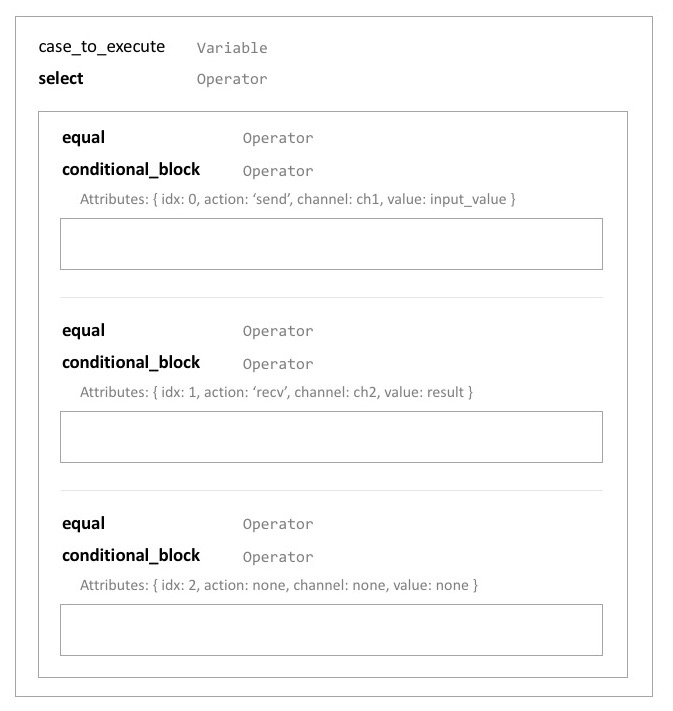Channels and Select Implementation Summary - PaddlePaddle/Paddle GitHub Wiki
This covers details of the recent work and implementation of two critical pieces of CSP: Channels, and the Select Operator.
The original design and implementation for Channels had the following shortcomings:
- They blocked when there were multiple senders and receivers for a channel. This is a requirement to be able to support
select. - Buffered and Unbuffered Channels were implemented separately, with the potential to cause inconsistency in implementations.
To solve these problems, we sought inspiration from the design of channels in Go (https://github.com/golang/go/blob/master/src/runtime/chan.go) and as summarized here: http://www.tapirgames.com/blog/golang-channel.
Key ideas that we got inspired from include:
- Use of separate send and receive queues to keep a track of channels waiting to receive or send to the queue, aside from a buffer queue that holds that data being passed.
- Direct send-receives between threads when there was nothing waiting in the buffer.
- Unified implementation for both buffered and unbuffered channels.
- Scenarios in which to panic and block.
The redesign also changes the contents of the buffer queue to be a QueueMessage that can hold data of any template type and allows blocking using a conditional variable.
Select has been modeled after Go's select syntax. Similar to what has been proposed in the original design doc, the Python API into the operators looks like:
with fluid.Select() as select:
with select.case(fluid.channel_send, ch1, input_value):
# Execute something.
...
with select.case(fluid.channel_recv, ch2, result2):
# Execute something with result2.
pass
with select.default():
pass
Note that the implementation does NOT actually use the fluid.channel_send or fluid.channel_recv ops. Instead, highlights of its implementation are as follows:
- There is a
selectop, and for each possible case inside of the select, aconditional_blockop is used. All theconditional_blocks are encapsulated in a separate block, which we can call the "cases block". - The channel variables, values to be sent or received, whether the cases are
sends orrecvs are known to theselectop by traversing theconditional_blocks inside the cases block, and accessing their attributes where these values are set. - The execution of the
selectop and its communication protocol with Channels is inspired by Go's implementation (https://github.com/golang/go/blob/master/src/runtime/select.go) which has been summarized well here: http://www.tapirgames.com/blog/golang-concurrent-select-implementation - The
selectop waits until it can resolve which case it needs to be executed. - It is the responsibility of
selectop to set a variable that shall be used by each of theconditional_blocks with the help of aequalsop to determine whether it should execute the statements within its block.
Here is the set of BlockDescs it creates in the ProgramDesc. Each box here is a block.

The last of the conditional blocks here is for the default case.